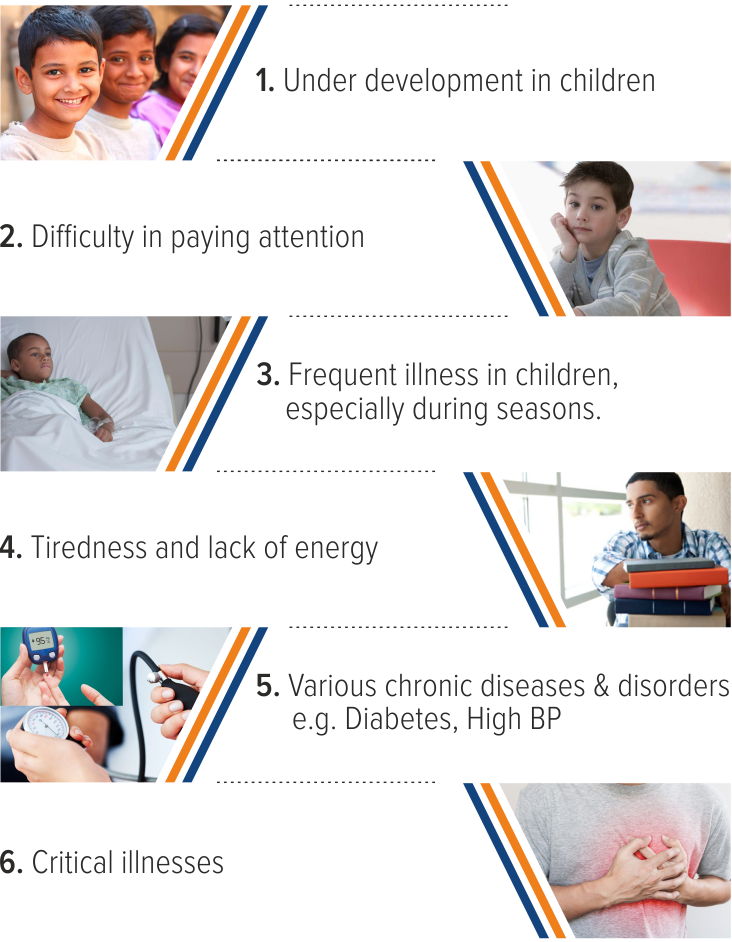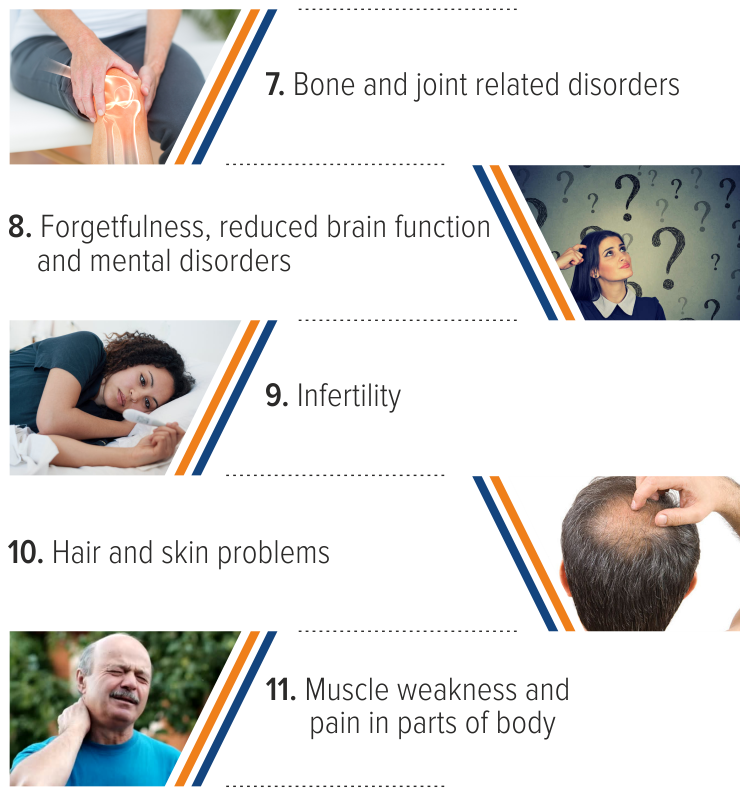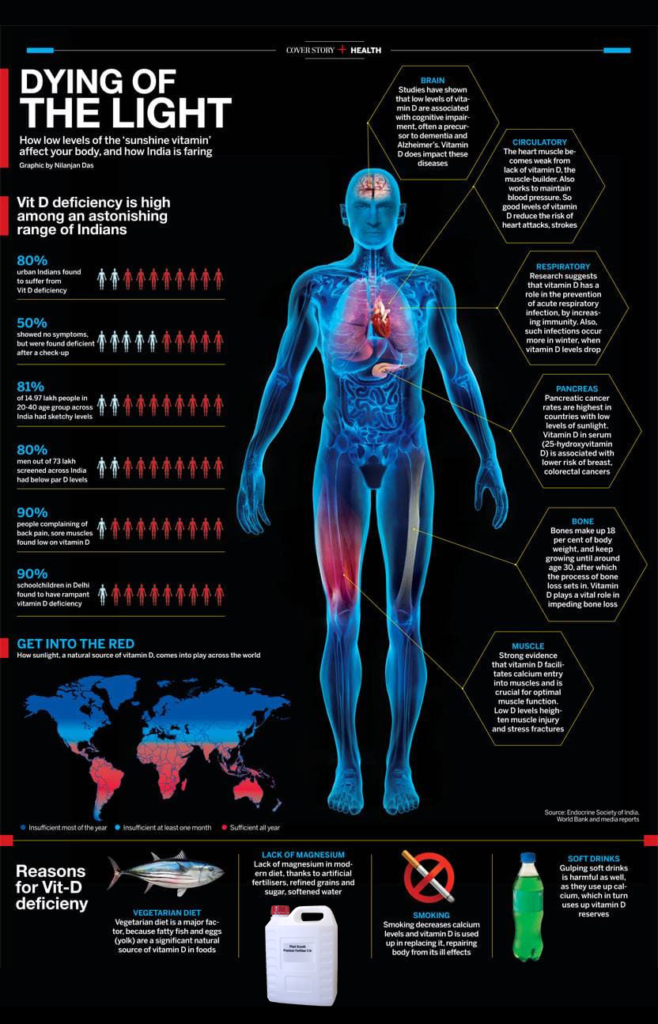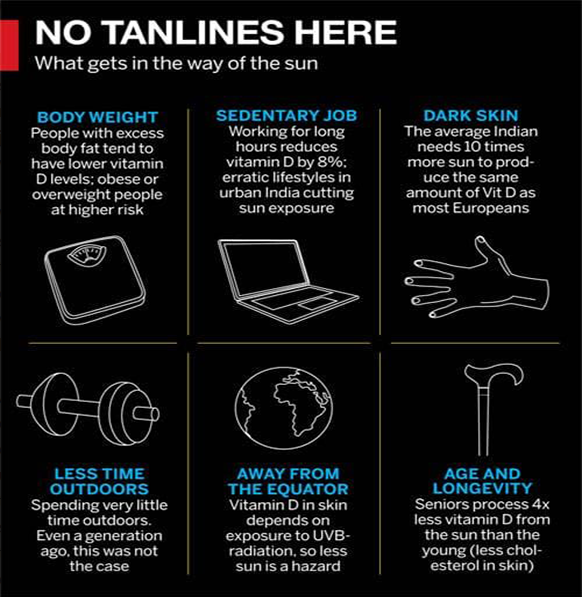Vitamin D Deficiency Epidemic in India
Considering such an important role of Vitamin D for the body, Vitamin D deficiency prevails in epidemic proportions all over the Indian subcontinent, with a prevalence of 80%. Vitamin D3 plays a role not only in development of bones, it is also believed to play roles in controlling the immune system (possibly reducing one’s risk of cancers and autoimmune diseases), increasing neuromuscular function and improving mood, protecting the brain against toxic chemicals, and potentially reducing pain.
Across all stages of life in India, we can observe several problems in India such as,


But how can India face a vitamin D crisis since it very sunny in most parts of India? Vitamin D is the only nutrient we make in our body. And we make it from the sun. “Ultraviolet B sunlight reacts with cholesterol on our skin and produces a form of vitamin D,” says Dr Nikhil Tandon, professor of endocrinology at AIIMS. “It then passes through the liver and kidneys to become ‘active’ vitamin D”. But with the Indian meteorological department reporting a progressively hotter climate over the last 55 years, especially in the last two decades, shouldn’t Indians be full of Vitamin D? In past 55 years we have started recording really low D status: 80 per cent across urban India, estimates the International Osteoporosis Foundation (IOF).
What’s going wrong? How is Vitamin D Deficiency an epidemy?
According to the World Health Organisation (WHO), an epidemic indicates numbers beyond the expected, it’s really everywhere and is a public health crisis. And yet the vitamin D deficiency crisis is largely unacknowledged by the public as well as the Indian government. “The conventional wisdom in India has been that bone decay is not as widespread here as in western countries and it typically happens to senior citizens and post-menopausal women,” says Dr Sanjay Bhadada, additional professor of endocrinology at PGIMER, Chandigarh. But piecemeal studies have been hinting at rampant D deficiency. And there is now enough research on the ground to give a bird’s-eye view of the nation: at least 50 studies in the last 10 years showed acute D deficiency, from 91 per cent in Delhi to 87 per cent in Mumbai, 82 per cent in Tirupati to 78 per cent in Lucknow, averaging at 80 per cent across India.
At PGIMER, almost 50 per cent patients with no symptoms get diagnosed with vitamin D deficiency in the course of routine check-ups, while 90 per cent patients complaining of back pain, unexplained muscle soreness or even general fatigue are found to be low on it. “It’s a whole universe,” says Bhadada. “From 20-something students to pregnant women, mid-level professionals to schoolchildren, women over 50 to teenagers, senior citizens to even neonates-patients from every walk of life.”


What Can Be Done?
No one is immune to the D deficiency. But some countries are smarter than others. The US, for instance, meets its vitamin D recommendations through fortified food, especially milk, some juices, margarines, and breakfast cereals. The country is still worried about its senior citizens though.
We Indians can start by taking a simple and free online test to self-examine if we are vitamin D deficient or insufficient. We can then do a vitamin D blood test to confirm the deficiency or consult a doctor to help you. Tell your family and friends about vitamin D or direct them to IndiaGetUpRise. We are sure that by being Vitamin D Sufficient, we Indians will be a Super Power.
References:
- https://www.researchgate.net/publication/260378438_Vitamin_D_Deficiency_in_India_Prevalence_Causalities_and_Interventions
- https://www.downtoearth.org.in/coverage/8-out-of-10-delhiites-have-vitamin-d-deficiency-60179
- https://www.indiatoday.in/magazine/cover-story/story/20160926-vitamin-d-vitamin-d-deficiency-bones-lifestyle-disease-829563-2016-09-14

